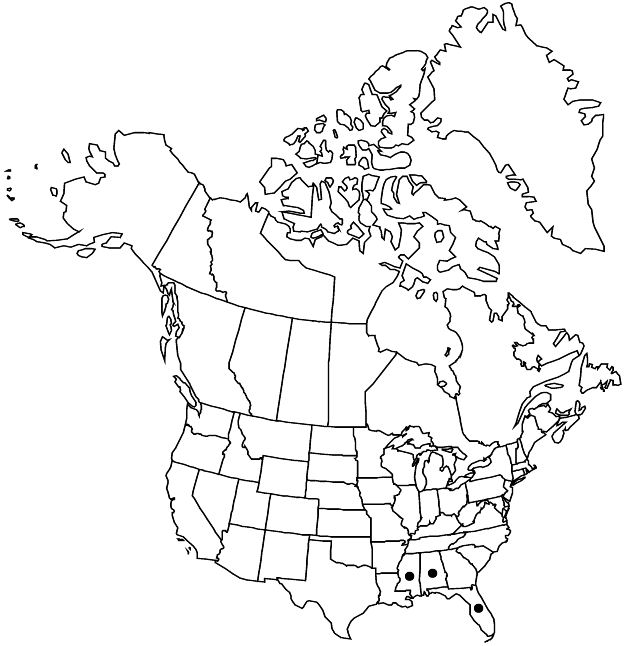Crataegus attrita
Biltmore Bot. Stud. 1: 98. 1902.
Shrubs or trees, 20–50 dm, branches ± weeping. Stems: trunk bark rough or rimose; twigs: new growth dark greenish red, glabrous, 1-year old dull gray; thorns on twigs numerous, ± straight, 1-year old dark grayish black, ± fine, 2 cm. Leaves: petiole slender, length 30% blade, sulcus short-pubescent, sparsely sessile-glandular; blade cuneiform, 1.5–3.5 cm, thin, stiff, base tapered, lobes 0 or 1 per side, subterminal, sinuses shallow, margins serrate (coarsely distally), venation semicamptodromous, veins 1 or 2 per side (originating in proximal part of blade, ending in widest, distal 1/3), apex rounded, surfaces glabrous, midveins ± tomentose near proximal end, abaxial main vein axils with tufts of hair. Inflorescences 2- or 3-flowered; branches glabrous or very sparsely pilose; bracteoles deciduous, linear, margins glandular. Flowers 18–22 mm diam.; hypanthium glabrous or very sparsely pubescent; sepals ± ligulate from wide bases, 4–5 mm, margins ± entire, ± glandular, abaxially glabrous; anthers cream; styles 3–5. Pomes yellow blushed red, suborbicular, 10–14 mm diam., glabrous; sepals not seen; pyrenes 3–5.
Phenology: Flowering Mar; fruiting Aug.
Habitat: Brush
Elevation: 0–100 m
Distribution

Ala., Fla., Miss.
Discussion
Crataegus attrita is known only from southeastern Mississippi (Lowndes County), southeastern Alabama (Dale and Greene counties), and adjacent Florida (Washington County). It is most similar to C. florens and C. teres and is more or less intermediate between the two; its dense tufts of hair in the abaxial vein axils are reminiscent of C. aestivalis.
Selected References
None.